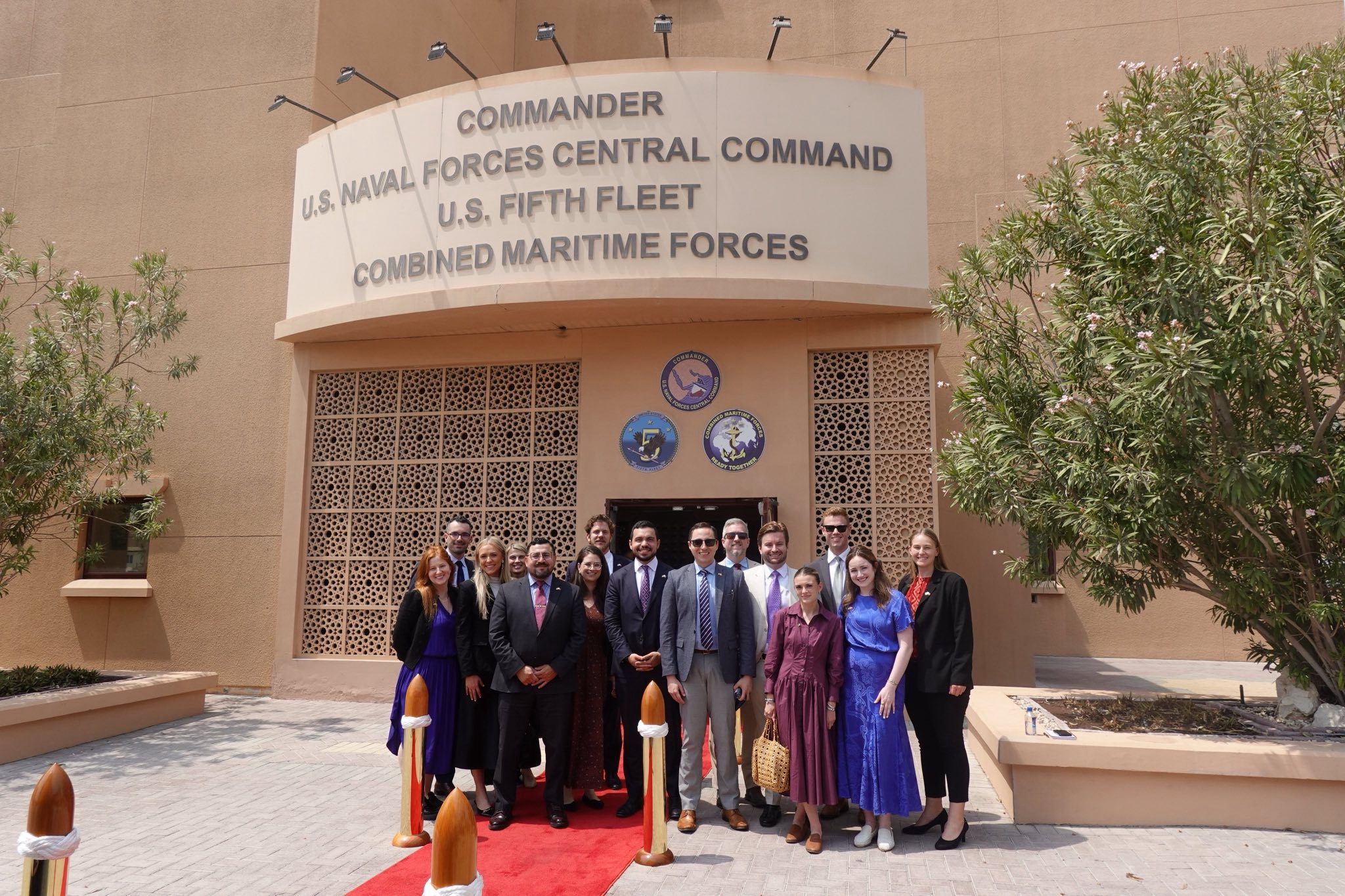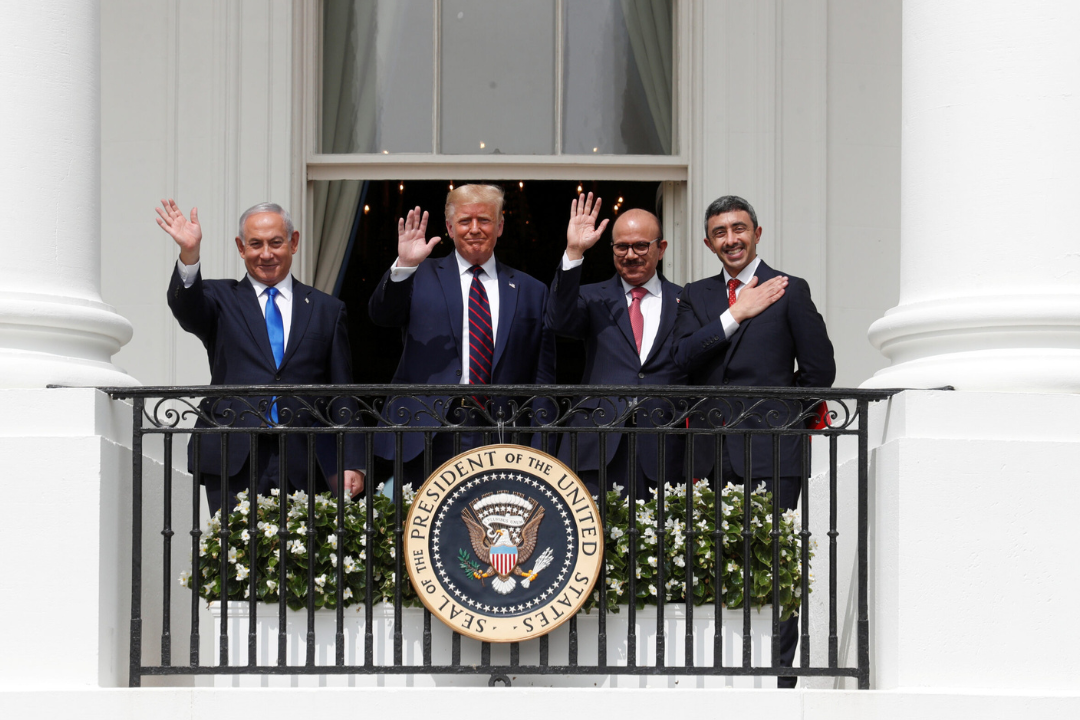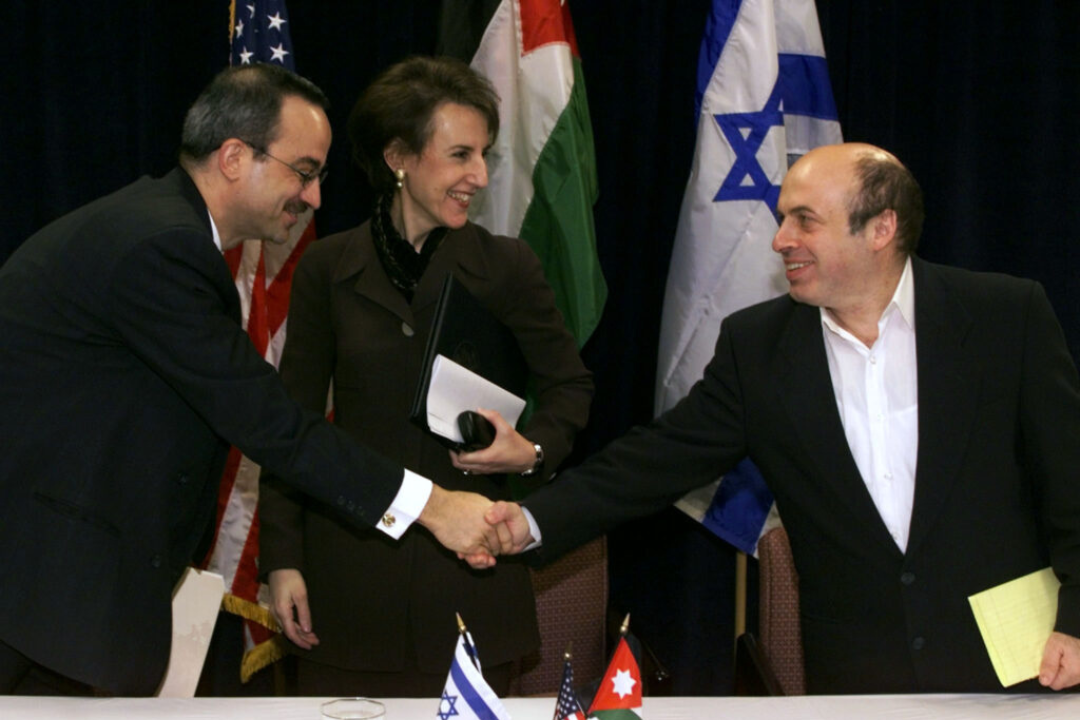The prospect of Saudi-Israeli normalization has captured the world’s attention as a potential game changer in Middle East geopolitics. The normalization process, however, is neither simple nor inevitable. It reflects a complex web of strategic objectives, domestic political considerations, and regional tensions. As the Donald Trump administration and regional actors ponder their approaches to this issue, it is worth analyzing the factors driving normalization, the dynamics shaping it, and its broader implications for the region.
The strategic case for normalization
At its core, Saudi-Israeli normalization offers the potential to reshape the region’s geopolitical landscape around a new security architecture. Cooperation between two of the Middle East’s most capable military powers could deter Iran’s malign activities, weaken its proxy networks, and secure strategic hotspots like Yemen and Lebanon. It would also enhance US influence by expanding defense cooperation, sharing intelligence, and encouraging more coordinated regional policies. Additionally, it would strengthen US partnerships with Israel and Saudi Arabia, helping to counter China’s expanding regional influence while allowing for a reduced direct presence. Connecting the “startup nation” with Saudi Arabia’s vast stores of capital would further foster innovation, enhance trade, and maximize comparative advantages, all while creating opportunities for other Arab states to join the fold.
“At its core, Saudi-Israeli normalization offers the potential to reshape the region’s geopolitical landscape around a new security architecture.”
Politically, normalization would transform dynamics in the Middle East, offering a rare chance to address deep-rooted historical grievances. For Israel, Saudi recognition would represent the ultimate reversal of the 1967 Khartoum Resolution’s “three nos” (no peace, no recognition, no negotiations), signaling acceptance of Jewish peoplehood and legitimacy in the region by one of the region’s most prominent Arab-Muslim actors and the custodian of Islam’s holiest sites. For Saudi Arabia, normalization would provide a pathway to resolve religious and national tensions with the Jewish state, and would help turn the region away from historical grievances and toward peace and prosperity. Beyond bilateral relations, such a breakthrough would likely catalyze broader Israeli-Arab and Israeli-Muslim reconciliation, potentially healing wounds that have defined regional politics for generations.
Arab-Israeli relations were defined by decades of hostility until a dramatic turn of events saw Israel conclude a peace treaty with Egypt in the late 1970s. More than a decade later, Israel acquiesced to a US-driven regional dialogue, embarked on a robust transformative peace process with the Palestinians, and secured a peace treaty with Jordan. Although conflict-ending agreements with Syria and the Palestinians remained beyond reach, they felt imminent at key moments in 2000 and in 2008.1 Violent escalations—including the second intifada, Hamas’s rise to prominence in Gaza and in Palestinian politics, and the Syrian Civil War—eroded the prospects of peace until 2020, when the Abraham Accords codified Israel’s warming relations with the United Arab Emirates (UAE), Bahrain, Morocco, and Sudan. The United States has since sought to follow the Abraham Accords with Israeli-Saudi normalization, although this agreement remains elusive.
From rejection to rapprochement
Attempts at Saudi-Israeli normalization efforts trace back to the Arab Peace Initiative (API) of 2002. Conceptualized during the height of the second intifada and amid a deadlock in the Israeli-Palestinian peace process, the ideas introduced by then Crown Prince Abdullah were later revised and codified by the Arab League. The API outlined a formula for full Arab-Israeli peace and normalization, effectively contingent on the realization of an Israeli-Palestinian two-state solution. The API also conditioned normalization on Israeli withdrawal from the Syrian Golan Heights, a condition since rendered largely moot by the Syrian Civil War and the implosion of the Syrian state.
While groundbreaking in its ambition to normalize relations between Israel and the Arab world, the API faced significant challenges that hindered its viability and reception. One major issue was its rigid “take it or leave it” approach, which Israelis perceived as leaving little room for negotiation or adaptation to evolving realities. The API’s reference to United Nations General Assembly Resolution 194, which focuses on refugee return, posed another major challenge, as Israel saw this condition as a threat to its demographic stability and national security. Additionally, the initiative offered unclear benefits for Israel, requiring significant upfront concessions—for instance, a full withdrawal to the 1967 lines, including East Jerusalem—without concrete assurances or clearly defined rewards until the very end of the process. Further complicating these issues was the API’s ineffective communication strategy toward the Israeli public, which failed to highlight potential benefits or address widespread skepticism. Together, these factors limited the initiative’s effectiveness, and the continued violence of the second intifada ultimately overwhelmed whatever initial momentum it had.
Despite this, the prospect of regional normalization—particularly with Saudi Arabia—as a reward for progress on the Palestinian issue became an increasingly prominent feature of subsequent Israeli-Palestinian peace efforts. This was evident during the 2007–2008 negotiations between Israeli Prime Minister Ehud Olmert and Palestine Liberation Organization (PLO) Chairman Mahmoud Abbas, which became known as the “Annapolis Process.” The initial conference drew representatives from more than forty stakeholders, including key Arab states, with Saudi Arabia notably among them. Later, in the context of US Secretary of State John Kerry’s 2013–2014 initiative, an Arab ministerial delegation endorsed the concept of land swaps between Israel and a future Palestinian state—marking a significant and much-needed revision to the original API. This gesture symbolized a flexibility that had been absent in the initiative’s early years.
Finally, the 2020 Abraham Accords demonstrated that Arab-Israeli normalization is not only achievable but can occur independently of significant progress on the Israeli-Palestinian conflict—a notion that once seemed politically unthinkable. These agreements marked a historic departure from the long-held Arab consensus—exemplified in the API—that normalization with Israel must be contingent upon a comprehensive resolution to the Palestinian issue. By establishing formal ties between Israel and the UAE, Bahrain, Morocco, and Sudan, the Abraham Accords shattered decades of diplomatic inertia and redefined regional priorities. The agreements highlighted the pragmatic calculus driving modern Middle Eastern politics, in which shared economic opportunities, technological collaboration, and collective security—particularly against the common threat of Iran—took precedence over long-standing ideological commitments. This precedent of regional integration, effectively untethered from Israeli-Palestinian progress, has emboldened proponents of Saudi-Israeli normalization who view it as a natural extension of this shifting paradigm.
“The Abraham Accords demonstrated that Arab-Israeli normalization is not only achievable but can occur independently of significant progress on the Israeli-Palestinian conflict—a notion that once seemed politically unthinkable.“
The path to normalization before October 7
During the spring and summer of 2023, Saudi-Israeli normalization became a key piece within an even broader set of US strategic priorities as officials began to explore a US-Saudi security pact. Starting in 2022, the Joe Biden administration had renewed its engagement with Saudi leaders to address key concerns, including Russia’s war in Ukraine, China’s growing influence in the Gulf, regional security, global oil prices, and energy transition challenges. This shift reflected the administration’s intent to maintain Saudi Arabia’s reliance on the United States as its primary strategic partner, even as the kingdom explored closer ties with China and Russia. For Washington, preserving this security relationship offered significant strategic advantages: continued military basing rights and force projection capabilities in a critical region; leverage over global oil markets and prices; counterterrorism cooperation; a bulwark against Iranian regional ambitions; and, crucially, a means to limit Chinese and Russian influence in a strategically vital part of the world.
From Riyadh’s point of view, a strategic alliance with the United States would serve as the foundation on which it could base its grand economic transformation. The kingdom sought a US-Saudi defense pact, ideally a formal defense treaty (providing security guarantees that would deter regional threats, particularly from Iran); assistance in developing a civilian nuclear program, including US approval for uranium-enrichment capabilities on Saudi soil, which the kingdom framed as essential for its long-term energy and technological development; and eased restrictions on US arms sales, ensuring continued access to advanced military technology.
To achieve this pact, domestic US politics necessitated Saudi-Israeli normalization. A security treaty between the United States and Saudi Arabia requires approval by two-thirds of the Senate, a daunting bipartisan benchmark in an age of extreme polarization. The support of Republican senators hinged on a meaningful gain for Israel, propelling the Jewish state to engage its allies on the Republican side in support of the deal.2 On the other side, a critical mass of Democrats—wary of entering a defense pact with what they saw as an unreliable ally, and holding lukewarm views toward Israel’s leadership and policies—demanded a significant Palestinian component as a condition for their support.3
Meanwhile, Abbas engaged the Saudis in full force. Determined not to repeat the mistake of breaking ranks with the UAE leading up to and following the Abraham Accords, Abbas attempted to close ranks with Saudi Arabia, maximizing the probability that the kingdom would leverage normalization for Palestinian gains. In what became a knotty trilateral US-Saudi-Israeli negotiation, the Palestinian issue remained the proverbial elephant in the room. Key US and Saudi actors insisted on a symbolic acknowledgment of an eventual Palestinian state (in the context of a two-state solution) and on practical steps on the ground—reversing annexation trends in the West Bank and stabilizing Jerusalem and its sensitive holy sites.4 It is hard to pinpoint what magnitude of a Palestinian component Saudi Arabia’s de facto leader, Crown Prince Mohammed bin Salman, aimed for during the summer of 2023. Reportedly, he was less committed to the Palestinian cause and was sensitive to the perceived price his country paid for conditioning normalization on a full two-state solution.5
But whether the Saudi crown prince merely pushed Palestinian statehood toward a less-defined point in the future or focused instead on improving Palestinian lives within the status quo, it is clear that both US and Saudi negotiators envisioned a more modest Palestinian component than the one proposed in the API, which conditioned normalization on the creation of a Palestinian state. This change reflected an overall de-prioritization of the Palestinian issue relative to its historic centrality in Arab goals and broader geoeconomic and security concerns—and it highlighted the overall disillusionment of key international actors with the potential for a significant breakthrough and with the makeup and behavior of the Palestinian leadership.
Recalculating priorities after the attack
The vicious October 7, 2023, Hamas terrorist attack and the subsequent war in Gaza fundamentally reshaped the normalization calculus. The conflict’s human toll and geopolitical consequences forced the United States and Saudi Arabia to reevaluate their priorities, shifting the Palestinian question from an afterthought to an urgent international priority. The prospect of further normalization efforts diminished significantly while Gaza burned and violence spilled into neighboring countries. The war highlighted the volatility of the Israeli-Palestinian arena, the cost of neglect and inaction, and the vulnerabilities of Arab states with existing, or potential, peace agreements with Israel.
“The administration should remain fully cognizant of the potential costs associated with a destabilized Palestinian arena and prevent destructive unilateral steps.”
Gaza’s day after quickly became central to regional geopolitics, with the short-term need for post-conflict stabilization and long-term Palestinian statehood aspirations becoming inextricably linked. During the first half of 2024, the United States engaged an Arab contact group, sometimes referred to as the group of six—Saudi Arabia, the UAE, Qatar, Egypt, Jordan, and the Palestinian Authority—in an attempt to consolidate a plan for an end to the war and for day after arrangements within a broader peace process, including regional normalization and integration.6
Arab priorities remained consistent and clear throughout: a swift end to the war, the stabilization of Gaza via transitional measures but ultimately under a reformed Palestinian Authority, and tangible progress toward two states.7 Only such meaningful steps could provide regional contributions to Gaza stabilization and normalization with legitimacy and durability.
Israel’s understandable focus on Gaza’s demilitarization and deradicalization was undermined by a systemic overestimation of regional willingness to support Gaza stabilization without addressing core Palestinian issues, including national self-determination. The Israeli government rejected any Palestinian Authority role in post-conflict governance and dismissed the two-state solution, even as a distant horizon. Widespread hostility toward Palestinians, intensified by Palestinian reactions to the October 7 attack, became deeply ingrained in mainstream Israeli constituencies, further widening the gap between Israel’s position and international expectations.
This created a strategic deadlock. While Israel sidelined—and, at times, actively undermined—Palestinian institutions and accelerated its annexation of the West Bank, the international community insisted on a two-state framework with Palestinian Authority involvement in Gaza.
Against this backdrop, Mohammed bin Salman insisted on a clear pathway toward a Palestinian state as a precondition for normalization. This stance reflected both pragmatic and strategic considerations for the kingdom. Domestically, normalization without tangible progress on Palestinian rights would have risked both religious legitimacy challenges and popular backlash from constituencies fully aware of the devastation in Gaza. Regionally, the Saudi leadership remained mindful of its role as an Arab and Muslim leader and guardian of the holy sites—a position that carried expectations of responsibility for the plight of the Palestinians.8
As the war dragged on, and especially when its commitment to the Palestinian cause was called into question, Saudi Arabia steadily hardened its public position. By early 2025, the kingdom maintained a firm stance against normalizing relations with Israel in the absence of Palestinian statehood, swiftly refuting Trump’s implication that Saudi Arabia had relaxed its position.9 In a public statement, the crown prince “clearly and unequivocally reaffirmed . . . that Saudi Arabia will continue its relentless efforts to establish an independent Palestinian state with East Jerusalem as its capital, and will not establish diplomatic relations with Israel without that.”10 Despite speculation that Saudi officials might show more flexibility in private discussions once the war concludes, the kingdom has so far remained unwavering in its position across US administrations. Some analysts have suggested that the crown prince maintained a dual-track approach—public firmness on Palestinian statehood while preserving space for eventual flexibility on timing and implementation. However, as regional attention increasingly focused on the humanitarian crisis in Gaza, Saudi Arabia has effectively slowed—if not entirely frozen—normalization efforts that had gained momentum before October 7.
Whether the Trump administration can reshape these dynamics to revive normalization prospects remains uncertain.
Charting the course: Recommendations for US policy
As a second Trump administration consolidates its Middle East strategy, it faces a unique opportunity to shape the future of Saudi-Israeli normalization. Success will require a carefully calibrated approach that balances ambition with realism. The administration could take the following steps:
- Establish political dialogues—both formal and informal—to increase understanding between decision-makers. By facilitating structured dialogues that illuminate each party’s fundamental worldviews, protected values, and core interests, the administration could help all sides recognize where genuine incompatibilities exist, rather than where positions stem from misperceptions or incomplete information. Such exchanges would allow Saudi, Israeli, and US officials to develop more accurate conceptual models of their counterparts’ decision-making frameworks, building understanding and empathy without requiring immediate concessions. This foundational work, conducted away from the pressures of active negotiations, would create a more fertile environment for future normalization efforts by preemptively addressing misconceptions that have historically derailed progress.
- Develop a clear Palestinian component of Israeli-Saudi normalization, centered around an updated interim framework for the Palestinian arena that draws on elements of Trump’s 2020 Peace to Prosperity plan. The administration could use the early part of its term to develop a Palestinian component of Saudi-Israeli normalization. Given the unlikelihood of a final status agreement in the near term, Israeli opposition to Palestinian statehood, and the Palestinian Authority’s capacity challenges, focusing on an updated interim framework for the Palestinian arena would be key to stabilizing post-conflict Gaza—and to changing dynamics in the West Bank away from unilateral annexation. Parts of Trump’s 2020 Peace to Prosperity plan could provide a useful transformative framework for the necessary reforms and the capacity building that the Palestinians must undertake, as well as for the territorial shaping of the new interim framework, and for dealing with contentious issues such as settlements and Jerusalem. In any case, the administration should remain fully cognizant of the potential costs associated with a destabilized Palestinian arena and prevent destructive unilateral steps.
- Leverage normalization to support progress and transform the Palestinian arena. The administration could develop a gradual roadmap for Israeli-Saudi normalization, strategically leveraging Saudi political, financial, and technical resources to stabilize and transform the Palestinian arena. Such a roadmap could outline clear diplomatic and operational milestones, ensuring measurable progress while securing regional buy-in. Saudi involvement can play a pivotal role in stabilizing post-conflict Gaza and strengthening governance in the West Bank by advancing Palestinian Authority reforms, capacity building, economic development, and security coordination. Additionally, it could help shift the Palestinian narrative toward greater acceptance of Israel, while mobilizing the Israeli public and political support for policies that enhance Palestinian territorial contiguity and long-term viability.
- Support public diplomacy around inclusive narratives. Normalization efforts should actively integrate Jewish, Palestinian, and Saudi national and religious narratives, emphasizing, where relevant, shared heritage and mutual attachment to the land. By framing the process as a partnership rooted in respect for all sides’ history, identity, and aspirations, this approach can foster deeper trust and legitimacy. The Abraham Accords, which highlighted commonalities across cultures and faiths, and Biden’s 2022 speech in Bethlehem, which acknowledged the deep connection of both peoples to the land, helped bridge divides between the sides. Practical steps might include public initiatives, such as joint cultural and religious events, education programs that teach mutual histories, and collaborative interfaith dialogues. At times, containing disagreements would be the operational and diplomatic objective of this effort. But generally speaking, highlighting shared values and addressing historic grievances with dignity will make normalization feel less like a transactional agreement and more like a genuine step toward coexistence and mutual respect.
- Use flexible diplomatic and political tools. To overcome the pitfalls of rigid frameworks that often lead to deadlock, the administration should champion adaptable agreements that can evolve with changing political and regional dynamics. Instead of relying solely on comprehensive, one-size-fits-all formulas, normalization efforts should leverage tools such as side letters, bilateral deals, phased commitments, and even verbal understandings to accommodate the unique needs and sensitivities of each stakeholder. For example, Saudi Arabia and the United States could formally acknowledge Palestinian statehood aspirations while allowing Israel to avoid immediate, binding endorsements, thereby navigating ideological and political barriers. Additionally, flexible agreements can enable progress on specific issues—such as security cooperation, economic development, or humanitarian relief—without tying them to the resolution of larger, more contentious questions. By allowing for gradual, issue-specific progress that builds trust and delivers tangible benefits, such agreements create momentum and buy-in from all parties. This approach ensures that normalization is not derailed by maximalist demands or entrenched opposition, but instead becomes a dynamic process capable of adapting to realities on the ground.







